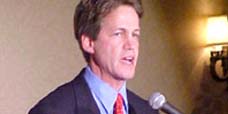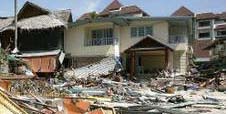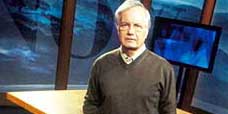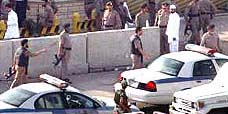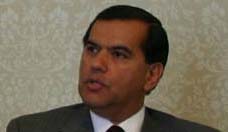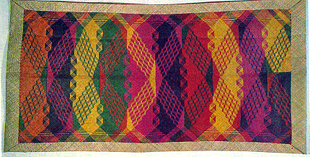
In 1962, an American Peace Corps volunteer named David Szanton and who had since then had become an anthropologist and is currently head of the International Programs at the University of California at Berkeley made a survey of the area and describe the process of mat making
*Banig: the Art of Mat Making
by David B. Baradas
In the warm and humid tropics, various cultures have devised ways and means to making leaving more tolerable, if not comfortable. The Philippines is no exemption and nowhere is this solution as obvious as in the Filipino use of variety of materials for making sleeping mats. Various species of reeds profusely grow in swampy areas, as well as a number of palm species, and rattan. These materials remain cool in the heat of the day, are smooth to touch, and porous enough to let ventilation through. Throughout the country one encounters a variety of mat making traditions using indigenously grown materials and embellishing these creations with highly imaginative designs.
[Excerpt]
Badjao/Samal Mat
The Badjao and Samal mat, design-wise, is undisputedly the most interesting tradition in the whole country. They are the most concentrated in the Tawi-Tawi province in the Sulu archipelago. The Badjao are traditionally boat-dwelling. They drop anchor wherever there is more fruitful fishing ground. Often mistakenly classed as a Muslim group, they subscribe to a system of belief that links them significantly to the sea.
The Samal, on the other hand, which occupies the bigger island in Tawi-Tawi, is Muslims and are generally engaged in trade and agriculture. Both groups speak mutually intelligible language and carry on a symbiotic trading partnership. These varying orientation would spell a difference in both the technology and design concept in their respective mat making tradition.
The most commonly used material is the pandanus plant which grows abundantly in the limestone-based island of Tawi-Tawi. The pandanus grow wild and untended in the shores and sandy beaches. The techniques for preparing the pandan and weaving the mats are generally similar throughout Sulu. In 1962, an American Peace Corps volunteer named David Szanton and who had since then had become an anthropologist and is currently head of the International Programs at the University of California at Berkeley made a survey of the area and describe the process of mat making as follows:
" First, the thick pandan leaves are cut and center rib are removed. The two halves are separated then rolled in a coil, about one foot in diameter. Tied and held at the bottom of a pot by a rock, the coil is cooked by the boiling water, removing some of the color. The coil is then dried in the sun, opened and the leaves flattened with stick. They are drawn through a small metal bladed tool, which cut each leaf into four or five narrow strips. Edge strips are discarded and are other are bundled loosely and left to bleach further in the sun before being resoaked in cold water for about 12 hours. By that time they have been sun-dried and softened with the stick once again, the natural color has almost completely faded and dying can begin. "
The dyes used are chemical dyes. The colors used are greens, orange, red, violet, blue, yellow. After dyeing they are placed in shade to dry and again gently beaten to further soften the material. These preparation usually takes about a week, while the weaving can take from two to five weeks.
The mats are a woven by these two groups could be distinguish from each other by their design and use of colors. The small mats have four general patterns namely, 1) Stripes, 2) multi-colored square, 3) a checkered pattern of white and other colors and, 4) a zigzag pattern. The Samal mats are muted in colors and are softer to the touch. This is achieve by the repeated beating during the preparatory phase. The slightly glossy effect on the surface is achieved by diluting the dye with some coconut oil. These later techniques in the preparation is not done by the Badjao. As a result their mats are not as pliable and a bit stiff when newly woven.
Among the Badjao exuberance of color used as well as highly spontaneous geometric and other stylized symbols set in apart from the Samal mats. The recurrent motifs that surface in the Badjao mat are in the form of stylized crab design, a series of wave-like or boat forms, patterns created by moving water, and some other marine life forms. The boldness stem from the use of colors that starkly contrast with the background.
